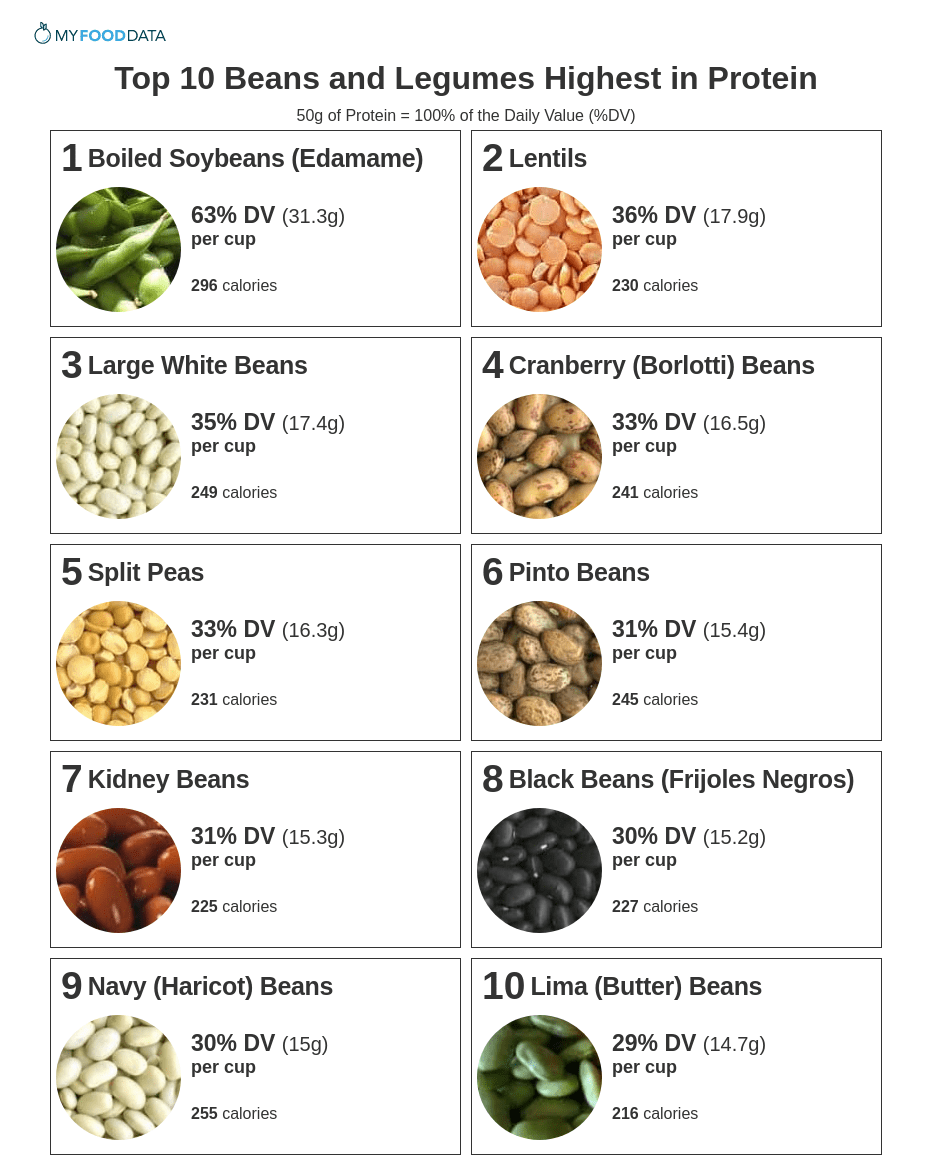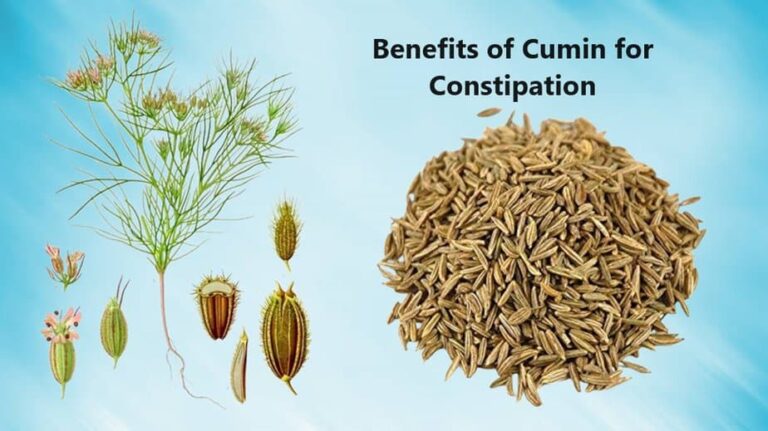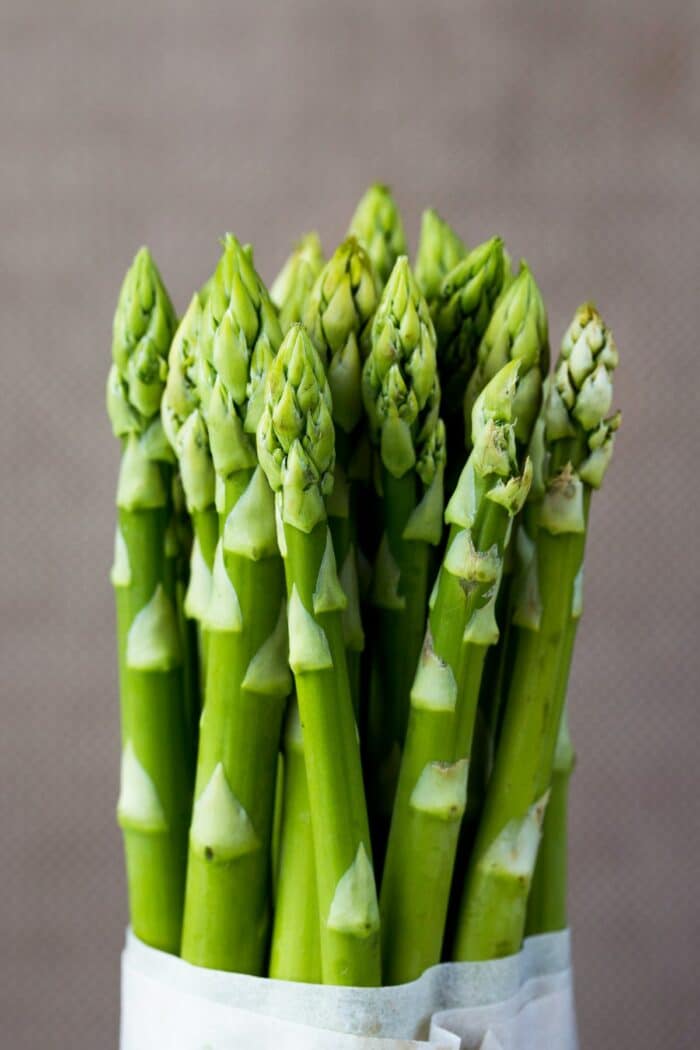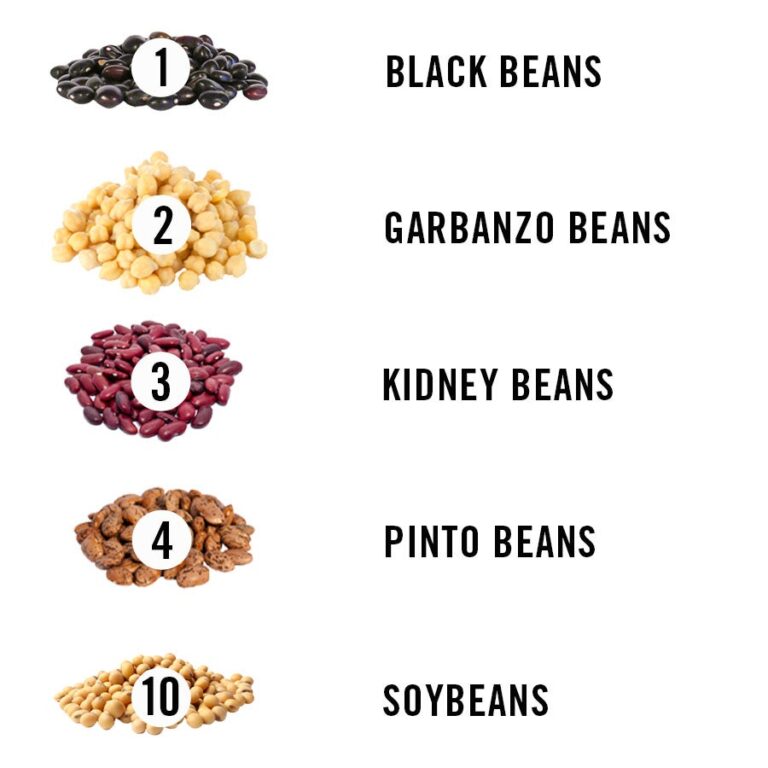The Legume Grand Prix: Unveiling the Bean Power Rankings for Fiber and Protein Supremacy
In the grand arena of nutritional champions, where every bite is a strategic move and every ingredient a contender, there exists an unassuming yet formidable class of competitors: the legumes. Often relegated to the side dishes or humble stews, beans are, in truth, the unsung heroes of a balanced diet, offering a potent one-two punch of dietary fiber and plant-based protein that few other food groups can match.
But among these diverse and ancient pods, who truly reigns supreme? Who are the gladiators of gut health and the titans of tissue repair? This isn’t just a list; it’s a narrative, a journey into the heart of the bean kingdom, a "Legume Grand Prix" where seven distinct varieties vie for the coveted title of most fibrous and protein-packed. For the discerning palate and the knowledgeable mind, we peel back the layers of history, science, and culinary artistry to tell the story of these incredible edibles.
Our audience, you, the connoisseur of calories and the scholar of sustenance, understands that food is more than fuel; it’s a legacy, a culture, a science. So, prepare to delve deep, as we unveil the Bean Power Rankings, a meticulously curated selection of the seven kinds with the most fiber and protein, celebrating their individual strengths, unique contributions, and the timeless wisdom they embody.
The Scoring System: More Than Just Numbers
Before we introduce our contenders, it’s crucial to understand the metrics of this grand competition. Our power rankings aren’t simply about raw numbers; they’re about the holistic impact. While fiber and protein are our primary judges, we also consider:
- Fiber Content (Per 100g Cooked): The undisputed champion for digestive health, satiety, and blood sugar regulation. We’re looking for the highest grams.
- Protein Content (Per 100g Cooked): The building block of life, essential for muscle repair, enzymes, and hormones. High grams here are key.
- Nutrient Density: Beyond the two main contenders, what other micronutrients (iron, folate, magnesium, potassium, zinc) do they bring to the table?
- Versatility & Culinary Appeal: How easily can they be integrated into diverse cuisines and dishes? A champion should be adaptable.
- Sustainability & Accessibility: Their ecological footprint and global availability are quiet but powerful factors.
We’ve standardized our measurements to 100 grams of cooked beans (boiled without salt, unless otherwise specified, as this represents their most common consumption form), to provide a fair and practical comparison. Let the games begin!
>
The Contenders: A Deep Dive into the Bean Power Rankings
1. The Mighty Black Bean: The Obsidian Oracle
- Average Fiber (cooked): 15g per 100g
- Average Protein (cooked): 21g per 100g
- Other Key Nutrients: High in folate, iron, magnesium, phosphorus, potassium, zinc, and a wealth of antioxidants (anthocyanins).
Hailing from the ancient agricultural lands of the Americas, the black bean, with its glossy, obsidian skin, is more than just a staple; it’s a cultural cornerstone and a nutritional powerhouse. Its story is one of enduring resilience, having nourished civilizations for millennia, from the Aztec empire to modern-day Latin America.
Why it Ranks High: The black bean stands tall as a dual-threat champion. Its fiber content is phenomenal, packing a significant punch of both soluble and insoluble fiber. Soluble fiber aids in lowering cholesterol and stabilizing blood sugar, while insoluble fiber promotes digestive regularity. This mighty fiber load, combined with its impressive protein count, makes it an exceptionally satiating bean, perfect for weight management and sustained energy. Beyond the numbers, black beans are renowned for their potent antioxidant profile, particularly anthocyanins, which give them their distinctive dark hue and offer robust cellular protection.
Culinary Applications: The black bean is a culinary chameleon. Its earthy, slightly mushroom-like flavor makes it perfect for hearty stews, spicy salsas, robust burritos, and the classic Gallo Pinto. It can be pureed into velvety soups, mashed into vegetarian burgers, or even baked into brownies for a stealthy nutritional boost. Its texture holds up beautifully, making it a star in both rustic and refined dishes.
The Story: Imagine the bustling markets of pre-Columbian Mesoamerica, where black beans were not just food but currency, a symbol of sustenance and prosperity. They traveled across oceans, adapting to new soils and palates, becoming integral to cuisines from the Caribbean to Portugal. The black bean tells a story of global migration and adaptation, consistently delivering nourishment across continents and centuries.
>
2. The Kidney Bean: The Robust Rescuer
- Average Fiber (cooked): 13g per 100g
- Average Protein (cooked): 24g per 100g
- Other Key Nutrients: Excellent source of iron, folate, magnesium, potassium, and molybdenum.
Named for its distinctive shape, the kidney bean is a robust and hearty legume, a familiar sight in chili bowls and Creole kitchens worldwide. Its journey began in Peru, spreading north to Mexico and then globally, proving its versatility and nutritional fortitude along the way.
Why it Ranks High: The kidney bean enters our rankings with a formidable protein score, making it an exceptional choice for muscle maintenance and repair, especially for plant-based diets. Its fiber content, though slightly lower than the black bean, is still incredibly high, contributing to its satisfying texture and beneficial impact on digestion and blood sugar control. The synergy of its fiber and protein ensures a slow release of energy, preventing sharp glucose spikes and promoting lasting fullness. Furthermore, kidney beans are rich in iron, a critical mineral for oxygen transport, and folate, vital for cell division.
Culinary Applications: Kidney beans are the undisputed champions of chili con carne, providing a creamy texture and absorbing bold flavors. They shine in red beans and rice, a Louisiana classic, and add bulk and nutrition to salads, soups, and vegetarian curries. Their firm texture means they hold their shape well, even after long simmering, making them ideal for slow-cooked dishes.
The Story: Picture a cowboy campfire, the aroma of simmering chili filling the night air, or a bustling New Orleans kitchen on a Monday, where red beans and rice is a sacred tradition. The kidney bean has been a comforting presence in times of scarcity and celebration, a testament to its reliability and nourishing qualities. It’s the bean that says, "You’re home, and you’re well-fed."
>
3. The Pinto Bean: The Spotted Sage
- Average Fiber (cooked): 15g per 100g
- Average Protein (cooked): 21g per 100g
- Other Key Nutrients: Rich in molybdenum, folate, manganese, iron, and thiamine.
The pinto bean, whose name means "painted" in Spanish, is instantly recognizable by its mottled beige and brown skin, which magically transforms into a uniform rosy-brown when cooked. It’s the quintessential bean of the American Southwest and Mexican cuisine, a testament to simple, hearty sustenance.
Why it Ranks High: The pinto bean shares the black bean’s impressive fiber content, making it a powerful ally for gut health and satiety. Its protein levels are equally commendable, offering a substantial contribution to daily needs. The combination of high fiber and protein makes pinto beans particularly effective in managing blood sugar levels and providing sustained energy throughout the day. Beyond these macros, pinto beans are a standout source of molybdenum, an essential trace mineral involved in numerous enzymatic reactions, and a good source of folate, crucial for DNA synthesis and repair.
Culinary Applications: Pinto beans are the backbone of refried beans, a staple side dish that accompanies nearly every Mexican meal. They are excellent in burritos, tacos, and bean dips, absorbing spices beautifully. Their creamy texture when cooked makes them perfect for mashing or serving whole in hearty stews and soups, offering a comforting and familiar flavor.
The Story: Envision the sun-drenched fields of the American Southwest, where generations have cultivated and relied upon the pinto bean. It’s a story of resilience in arid lands, of slow-cooked meals shared around family tables, and of a simple ingredient that forms the heart of complex and flavorful cuisines. The pinto bean is the quiet elder, holding wisdom in its speckled skin.
>
4. The Navy Bean (White Bean): The Maritime Marvel
- Average Fiber (cooked): 11g per 100g
- Average Protein (cooked): 22g per 100g
- Other Key Nutrients: High in fiber, folate, iron, magnesium, manganese, and copper.
Small, oval, and distinctly white, the navy bean earned its name from its historical inclusion in the U.S. Navy diet in the 19th century, a testament to its dense nutrition and long shelf life. Often interchangeable with Great Northern or Cannellini beans in many recipes, the navy bean is the compact powerhouse of the white bean family.
Why it Ranks High: While its fiber content is slightly less than our top three, the navy bean still delivers an excellent amount of dietary fiber, contributing significantly to digestive health and feelings of fullness. Its protein count is exceptionally high, making it a superb plant-based protein source for muscle growth and repair. What truly sets the navy bean apart is its high concentration of various micronutrients, particularly folate (essential for cell division), manganese (a powerful antioxidant), and copper (important for iron absorption and energy production). Its compact size means you get more nutrient density per volume.
Culinary Applications: The navy bean is the star of the classic Boston Baked Beans, cooked slowly with molasses and salt pork. It’s also fantastic in hearty soups like minestrone, pureed into creamy dips, or served as a simple, seasoned side dish. Its mild flavor makes it incredibly versatile, easily taking on the characteristics of accompanying spices and herbs.
The Story: Picture the vast oceans, a ship sailing under the command of a navy captain, its crew sustained by barrels of these small, white beans. It’s a story of practicality, of nourishing sailors on long voyages, ensuring strength and health far from shore. The navy bean embodies efficiency and essential sustenance, a humble hero of the high seas.
>
5. The Chickpea (Garbanzo Bean): The Mediterranean Monarch
- Average Fiber (cooked): 8g per 100g
- Average Protein (cooked): 19g per 100g
- Other Key Nutrients: Excellent source of folate, iron, magnesium, potassium, zinc, and prebiotics.
With its distinctive nutty flavor and firm texture, the chickpea, also known as the garbanzo bean, is a regal presence in cuisines across the Middle East, India, and the Mediterranean. Its history stretches back over 7,500 years, making it one of the earliest cultivated legumes.
Why it Ranks High: The chickpea, while boasting slightly lower individual fiber and protein numbers than some of its bean brethren, still offers an impressive combination. Its strength lies in its balanced profile and its unique contribution of resistant starch, a type of fiber that acts as a prebiotic, feeding beneficial gut bacteria. This makes chickpeas exceptional for gut health and overall digestive wellness. The protein content is significant for a plant-based food, and they are packed with essential minerals like iron, folate, and zinc, crucial for immunity and cellular function.
Culinary Applications: The chickpea is arguably one of the most versatile legumes. It’s the star of hummus, a creamy dip beloved worldwide, and the crunchy, savory falafel. It adds substance to vibrant curries, salads, and tagines. Roasted chickpeas make for a healthy, crunchy snack, and their liquid (aquafaba) can even be whipped into a vegan egg white substitute.
The Story: Imagine the sun-drenched hills of the Fertile Crescent, where chickpeas were first harvested, sustaining ancient civilizations. Picture bustling spice markets in Marrakech, or a family gathering in Greece, where chickpea dishes are passed down through generations. The chickpea tells a story of ancient wisdom and global culinary delight, a monarch ruling tables from simple taverns to grand feasts.
>
6. The Lentil (Brown/Green): The Speedy Spheres
- Average Fiber (cooked): 8g per 100g
- Average Protein (cooked): 24g per 100g
- Other Key Nutrients: Exceptional source of folate, iron, manganese, phosphorus, and thiamine.
Though technically a pulse and not a "bean" in the strictest sense, lentils are an indispensable member of the legume family and a powerhouse in their own right. These small, disc-shaped wonders are among the oldest cultivated crops, with evidence dating back 13,000 years. We’ll focus on the common brown/green varieties.
Why it Ranks High: Lentils are the undisputed protein champions of this list, packing an incredible 24g per 100g when cooked. This makes them an outstanding source of plant-based protein, rivaling meat in many aspects. Their fiber content is also excellent, contributing to digestive regularity, heart health, and satiety. The combination of high protein and fiber makes lentils incredibly filling and blood-sugar friendly. Furthermore, lentils are an absolute treasure trove of micronutrients, particularly folate (critical for heart health and pregnancy), iron (essential for energy and blood formation), and manganese (an antioxidant mineral). They also boast one of the best cooking times among legumes, requiring no pre-soaking.
Culinary Applications: Lentils are incredibly versatile. They form the base of countless dahl recipes in Indian cuisine, add heartiness to French puy lentil salads, and thicken rich soups and stews. They can be used to make vegetarian "meatloaf," burgers, or simply served as a nutritious side dish seasoned with herbs and spices. Their ability to absorb flavors makes them a chef’s dream.
The Story: Envision the earliest human settlements, where lentils were a foundational crop, providing dense nutrition that allowed communities to thrive. Picture humble peasant stews that sustained families through long winters, or the vibrant, aromatic dishes of South Asia. The lentil’s story is one of enduring utility, a small but mighty sphere that has fueled humanity for millennia.
>
7. Edamame (Green Soybeans): The Vibrant Vanguard
- Average Fiber (cooked, in pod): 5g per 100g
- Average Protein (cooked, shelled): 11g per 100g
- Other Key Nutrients: Excellent source of vitamin K, folate, manganese, phosphorus, and phytoestrogens (isoflavones).
Edamame, young green soybeans harvested before they ripen and harden, present a unique and vibrant entry into our power rankings. Popular in East Asian cuisines, they are often served steamed in their pods, offering a delightful and nutritious snack.
Why it Ranks High: While the raw numbers for fiber and protein might seem slightly lower than some of the other contenders, edamame’s strength lies in its complete protein profile (containing all nine essential amino acids) and its exceptional nutrient density per serving, especially for a fresh legume. Its protein is highly bioavailable, and the fiber contributes significantly to digestive health. Edamame is also a fantastic source of Vitamin K (crucial for blood clotting and bone health), folate, and manganese. Additionally, it contains beneficial phytoestrogens (isoflavones) which are being studied for their potential health benefits, particularly for bone health and hormone balance.
Culinary Applications: Edamame is most commonly enjoyed steamed and lightly salted, served as an appetizer or snack, either in the pod or shelled. It adds a pop of vibrant green color and a slightly sweet, nutty flavor to salads, stir-fries, and grain bowls. It can be pureed into dips or added to pasta dishes for extra protein and texture.
The Story: Imagine the tranquil rice paddies of East Asia, where soybeans have been cultivated for thousands of years, evolving into the tender, verdant edamame we know today. It’s a story of fresh vitality, of a simple pod that encapsulates complex nutrition, bringing a touch of refreshing green to tables around the world. The edamame is the youthful vanguard, promising both flavor and robust health.
>
Beyond the Rankings: The Deeper Story of Legumes
Our journey through the Legume Grand Prix reveals not just individual champions, but a collective truth: beans are fundamental to human health and planetary well-being. But for our knowledgeable audience, the story doesn’t end with a mere list. It extends into the very science of why these humble ingredients are so profound.
The Science of Fiber: The Unsung Hero of Gut Health
Fiber, often overlooked, is the silent workhorse in our digestive system. It’s not digested by the body directly, but its impact is immense.
- Soluble Fiber: Found abundantly in beans, this type dissolves in water to form a gel-like substance. It helps lower blood cholesterol (by binding to cholesterol particles in the digestive tract), regulates blood sugar levels (by slowing glucose absorption), and provides a feeling of fullness, aiding in weight management.
- Insoluble Fiber: The "roughage" that adds bulk to stool, promoting regular bowel movements and preventing constipation. It’s vital for maintaining a healthy colon and can reduce the risk of diverticular disease.
- Prebiotic Power: Many of the fibers in beans, particularly resistant starch, act as prebiotics. This means they are fermented by beneficial bacteria in the gut, fostering a thriving gut microbiome. A healthy gut microbiome is linked to improved immunity, mood regulation, and even protection against chronic diseases. The byproducts of this fermentation, short-chain fatty acids (SCFAs) like butyrate, are crucial for gut lining integrity and have systemic anti-inflammatory effects.
The Science of Protein: More Than Just Muscle
Plant-based protein from legumes is a complete game-changer for many diets. While some plant proteins are considered "incomplete" (lacking one or more essential amino acids), the beauty of a diverse plant-based diet, rich in beans and grains, is that these proteins complement each other perfectly.
- Amino Acid Profile: Beans are rich in lysine, an essential amino acid often limiting in grains. Grains, in turn, are rich in methionine, which can be limiting in beans. Consuming a variety of plant proteins throughout the day ensures all essential amino acids are met. Edamame, as noted, is a complete protein on its own.
- Satiety and Metabolism: Protein is the most satiating macronutrient, meaning it keeps you feeling full for longer. This is invaluable for weight management. Furthermore, protein has a higher thermic effect of food (TEF) compared to carbohydrates and fats, meaning your body burns more calories digesting and metabolizing it.
- Beyond Muscle: Protein is essential for virtually every function in the body: building and repairing tissues (not just muscle!), making enzymes, hormones, and other body chemicals, and serving as a crucial component of every cell.
The Synergistic Magic: Why Beans are Nutritional Superstars
The true power of beans lies in the synergy of their components. It’s not just high fiber or high protein; it’s the potent combination, plus the vast array of vitamins, minerals, and phytonutrients they contain.
- Blood Sugar Management: The high fiber slows carbohydrate digestion, while protein further mitigates blood sugar spikes, making beans excellent for managing and preventing type 2 diabetes.
- Heart Health: Soluble fiber lowers cholesterol, potassium helps regulate blood pressure, and antioxidants protect against oxidative stress – all contributing to a healthier cardiovascular system.
- Weight Management: The combination of fiber and protein promotes satiety, helping to reduce overall calorie intake without feelings of deprivation.
- Cancer Prevention: The diverse array of phytonutrients, antioxidants, and fiber in beans contributes to their potential role in reducing the risk of certain cancers, particularly colorectal cancer.
The Ancient Art of Preparation: Maximizing Benefits, Minimizing Discomfort
For the knowledgeable consumer, understanding how to prepare beans is as important as knowing their nutritional profile.
- Soaking: Most dried beans benefit from soaking (8-12 hours, changing water). This not only reduces cooking time but also helps to break down oligosaccharides (complex sugars) that can cause flatulence. The water should always be discarded.
- Cooking Thoroughly: Undercooked beans can contain toxins (like phytohaemagglutinin in kidney beans) that are destroyed by proper cooking. Pressure cooking is an excellent method for speed and consistency.
- Enzyme Power: For those sensitive to beans, alpha-galactosidase enzyme supplements (like Beano) can help break down the gas-producing sugars.
- Spice it Up: Incorporating spices like cumin, ginger, and turmeric can also aid digestion.
The Environmental Footprint: A Sustainable Future
Beans are not just good for us; they are profoundly good for the planet.
- Nitrogen Fixation: Legumes have a unique symbiotic relationship with soil bacteria, allowing them to "fix" atmospheric nitrogen into a form plants can use. This reduces the need for synthetic nitrogen fertilizers, which are energy-intensive to produce and can lead to environmental pollution.
- Low Water Footprint: Compared to animal proteins, beans require significantly less water to produce.
- Soil Health: They improve soil structure and fertility, making them excellent rotation crops.
- Biodiversity: Cultivating diverse bean varieties contributes to agricultural biodiversity.
Embracing beans is a vote for personal health and planetary stewardship.
The Grand Finale: A Legacy of Legumes
As the dust settles on our Legume Grand Prix, the message is clear: beans, in all their glorious variety, are champions. From the obsidian depth of the black bean to the vibrant freshness of edamame, each contender brings a unique story and an unparalleled nutritional offering to the table. They are ancient foods, perfected by millennia of cultivation and consumption, now validated by modern science as pillars of health.
You, our knowledgeable audience, now carry the torch of this understanding. You know that incorporating these fibrous, protein-rich powerhouses into your diet is not just a trend; it’s a return to fundamental wisdom. It’s a commitment to robust gut health, sustained energy, strong muscles, and a thriving planet.
Let this power ranking not be an end, but a beginning. A catalyst for exploration in your own kitchen, a guide to new culinary adventures, and a reminder that true strength often lies in the most humble and enduring ingredients. The story of the bean is still being written, one delicious, nutritious meal at a time. Embrace the legume legacy, and let these champions fuel your journey.







